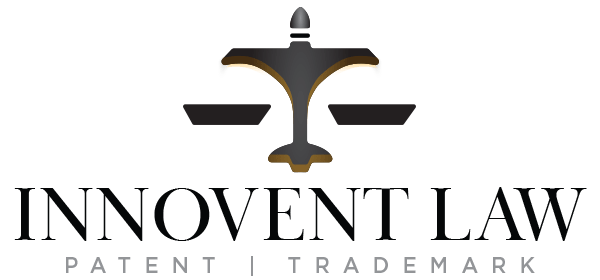Learn the most Common Mistakes in Your Patent Application (Plus Bonus Mistakes to Avoid)
Filing a patent application is an exciting step in protecting your invention, but the process is filled with technical requirements and deadlines that can be tricky to navigate. Making mistakes along the way can lead to costly delays, rejections, or even the abandonment of your patent. To ensure your invention gets the protection it deserves, it’s crucial to be aware of common mistakes and how to avoid them.
In this blog, we’ll cover the 5 most common mistakes in patent applications and provide some bonus tips to help you avoid additional pitfalls.

1. Insufficient Description and Detail
A patent application requires a detailed description of the invention. One of the most common mistakes inventors make is providing an insufficient description, which leads to a rejection or a patent that doesn’t offer the full protection you need. The USPTO (United States Patent and Trademark Office) mandates that your invention be described in such a way that someone skilled in the field could replicate it based on the description.
How to Avoid It:
Include all relevant details about how your invention works, its components, and possible variations. Providing comprehensive drawings alongside your description can strengthen your application. Consulting with a patent attorney can ensure your application meets all requirements.
2. Skipping a Patent Search
Failing to perform a patent search before submitting your application can be a costly mistake. Without knowing if similar inventions already have patents, your application might be rejected by the USPTO due to prior art, which refers to pre-existing inventions that are too similar to yours.
How to Avoid It:
Conduct a thorough patent search before filing a patent application. This step can help you refine your application and improve your chances of approval. A patent lawyer can assist you in conducting a professional search, identifying prior art, and positioning your invention as novel and inventive.
Related Resources:
Cost of Patenting an Invention
3. Vague or Overly Broad Patent Claims
The claims section of your patent defines the scope of your legal protection. One common mistake is drafting claims that are either too vague or overly broad. Vague claims can weaken your application, and overly broad claims might get rejected because they are disclosed by prior art.
How to Avoid It:
Work with a patent attorney to craft clear and specific claims that both accurately describe the unique aspects of your invention and avoid prior art. This will give you stronger legal protection and increase the likelihood of approval.
Related Resources:
What is a Utility Patent?
4. Missing Deadlines
The patent application process includes many deadlines, from filing fees to responses to office actions. Missing these deadlines can lead to delays, increased costs, or even the abandonment of your application.
How to Avoid It:
Stay organized and work with your patent attorney to track important dates and ensure all deadlines are met. Using patent docketing software can also help keep track of deadlines and avoid missing key steps.
5. Poorly Prepared Patent Drawings
Patent drawings are a crucial part of any patent application. Submitting poorly prepared drawings or drawings inconsistent with the written description can lead to unnecessary delays or even rejection of your application. The drawings must meet USPTO guidelines and clearly illustrate your invention.
How to Avoid It:
Ensure that your patent drawings meet USPTO standards and are consistent in style and clarity. Consider using professional patent drawing services to create accurate and compliant drawings. Drawings should complement the written description and help examiners understand your invention.
Bonus Mistakes to Avoid
1. Trying to File the Patent by Yourself
While it may be tempting to file your patent application without professional help, the process is complicated. Clerical mistakes in filing or lack of understanding of the legal requirements can lead to a rejection and leave your invention unprotected.
How to Avoid It:
Hiring an experienced patent lawyer is key. They can guide you through the process, help you avoid mistakes, and ensure your application is robust and compliant with USPTO standards.
Related Resources:
Patent Services at Innovent Law
2. Inconsistent Patent Drawings
Your patent drawings must be consistent in style and level of detail. Submitting drawings with different styles or levels of accuracy can confuse the patent examiner and delay the approval process. Also, patent drawings should be consistent with the written description to avoid confusion and subsequent rejection.
How to Avoid It:
Ensure that all your patent drawings are clear, accurate, and uniform in style. Using a patent drawing program or a professional service can help you achieve this. Ensuring consistent numbering in both patent drawings and corresponding elements in the written description.
3. Missing Follow-Ups and Communication with Your Lawyer
The patent application process is complex, involving many interactions between you, your attorney, and the USPTO. Failing to follow up or missing important communications can result in unnecessary delays, missed opportunities to strengthen your application, or abandonment.
How to Avoid It:
Maintain regular communication with your patent attorney and stay on top of all required follow-ups and office actions from the USPTO.
Protect Your Invention with Expert Guidance
Filing a patent application is a critical step in protecting your invention and its commercial potential. By avoiding these common mistakes and working with a knowledgeable patent attorney, you can significantly improve your chances of success. Whether you’re filing a utility patent, design patent, or deciding between provisional and non-provisional applications, Innovent Law is here to help.
Innovent Law provides comprehensive patent services, helping you file your application successfully and avoid costly pitfalls. Contact us today to schedule a free consultation.
